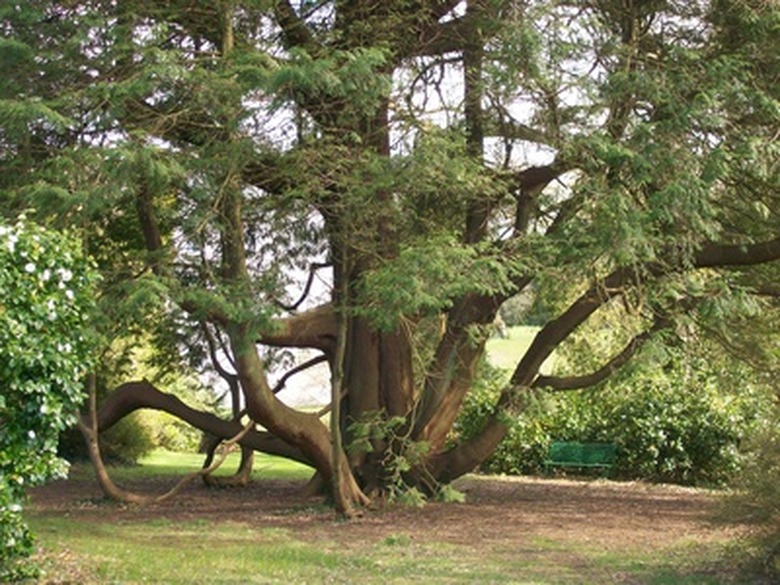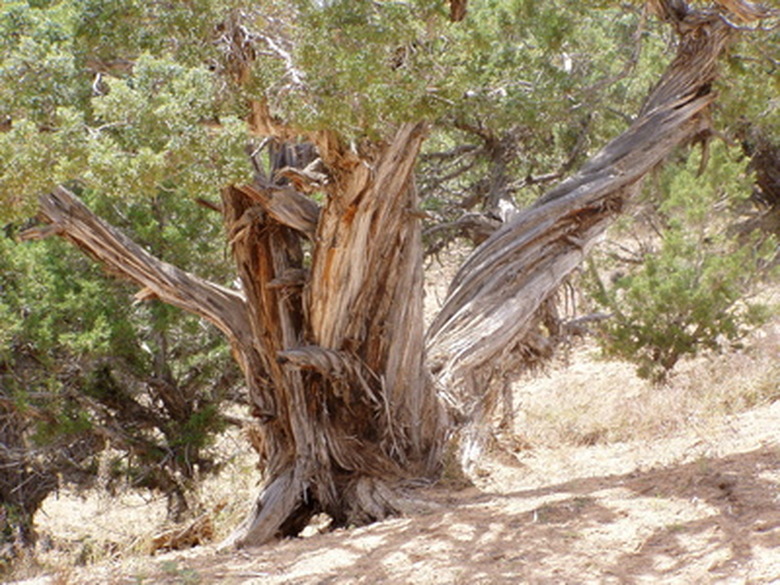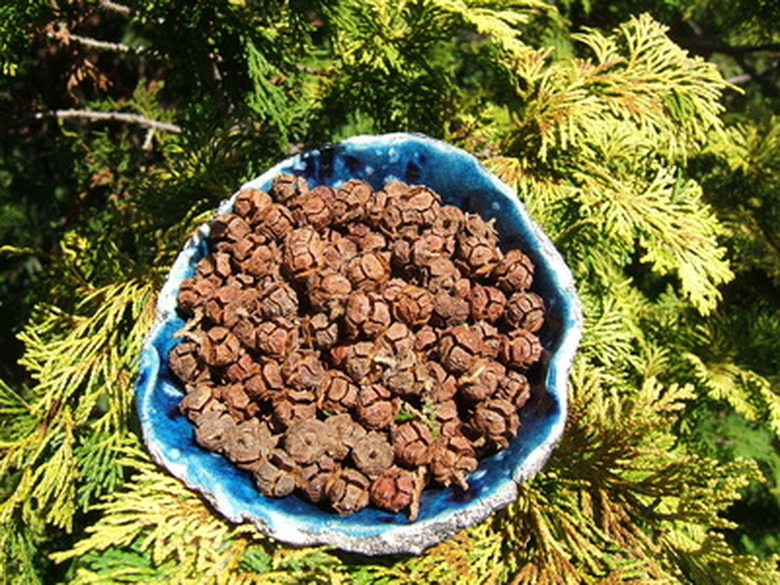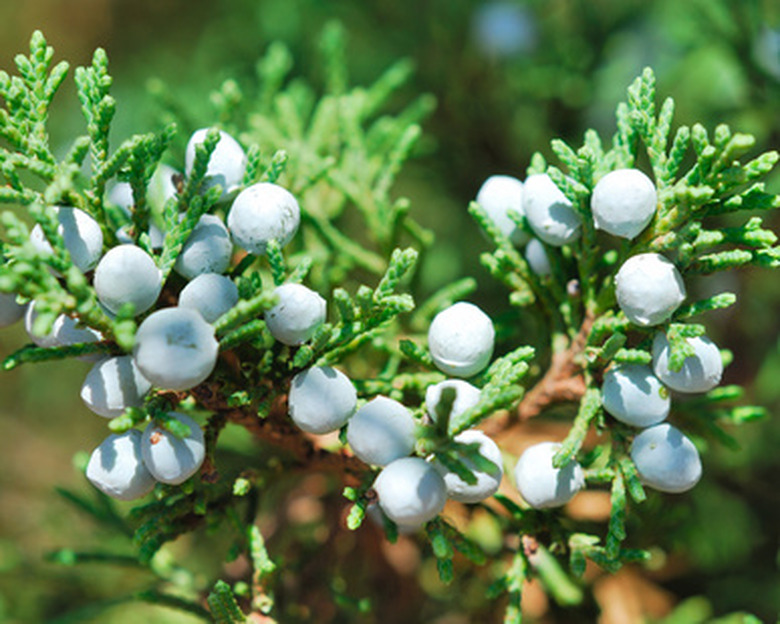How To Identify A Cedar Tree
There are three main types of cedars: the red cedar (Juniperus virginiana) or Eastern red cedar; the Northern white cedar (Thuja occidentalis) or arborvitae; and the Atlantic white cedar (Chamaecyparis thyoides). Both the red and Atlantic white cedars are also known as junipers. All cedar trees are evergreen conifers and have distinct bark. You'll know that you're looking at some kind of cedar tree by noticing the reddish-brown bark that peels off in fibrous strips.
Step 1
Identify cedar trees by their overall shape and form. Eastern red cedars have a dense, column-shaped crown, while Atlantic white cedars have a narrow, pointed crown, with a slender shape and short branches. Northern white cedars have a pyramidal or arrowhead shape with a pointed crown and short horizontal branches.
- There are three main types of cedars: the red cedar (Juniperus virginiana) or Eastern red cedar; the Northern white cedar (Thuja occidentalis) or arborvitae; and the Atlantic white cedar (Chamaecyparis thyoides).
- Northern white cedars have a pyramidal or arrowhead shape with a pointed crown and short horizontal branches.
Step 2
Distinguish between cedar types by studying their mature heights. Red cedars grow 40 to 60 feet tall, Atlantic whites can reach 85 feet in height and 2 feet in width, and Northern whites grow 40 to 70 feet tall and 1 to 3 feet wide.
Step 3
Identify cedar trees by their natural habitats. Eastern reds can grow in a wide variety of environments and flourish where few other trees can grow, from edges of acidic wetlands to dry, rocky ridges. Atlantic whites grow in or near freshwater bogs and glades, as well as at the edges of swamps and streams, while Northern whites grow in cool, moist soils, e.g., on the banks of streams.
Step 4
Spot cedar tree species by studying their needles. Red cedars have fragrant, 1/16-inch-long needles that are shiny, dark-green and scale-like, forming four-sided twigs. Atlantic white cedars have dark bluish-green, 1/8-inch-long needles that are overlapping, scaly and close to the twigs. Northern whites' 1/8- to ¼-inch-long needles are scale-like, flattened "branchlets" that create fan-like formations. Both Atlantic and Northern white cedars' needles are fragrant only when crushed.
- Distinguish between cedar types by studying their mature heights.
- Atlantic white cedars have dark bluish-green, 1/8-inch-long needles that are overlapping, scaly and close to the twigs.
Step 5
Look at the cones to identify cedar tree types. Eastern reds have cones only on female trees, which are ¼- to 1/3-inch wide, round and fleshy, and turn from green to blue when as they ripen, with a grayish-white waxy coating. Atlantic whites' ¼-inch wide cones are bluish or purplish with a waxy, grayish covering, turn reddish-brown in fall and have a slightly crumpled appearance. Northern whites have leathery, reddish-brown, oblong cones that are ½-inch long and grow upright on the branches, with rounded scales that have a small spine on each of the tips.
Tip
Although the flowers on cedar trees are inconspicuous, you can use them as additional clues for identification. Eastern red cedars' male flowers grow in large clusters and are small and yellowish-brown, while the females are light bluish-green. Atlantic white cedars' male flowers are red to yellowish and tiny, while the females are small and greenish. Northern whites have round, green male flowers that are tipped with brown, and females that are green with four to six "scales."
Warning
Don't confuse Atlantic white cedars with Northern white cedars. Northern white cedars have a trunk that's twisted with two or more stems, while Atlantic whites have a single, straight trunk.



